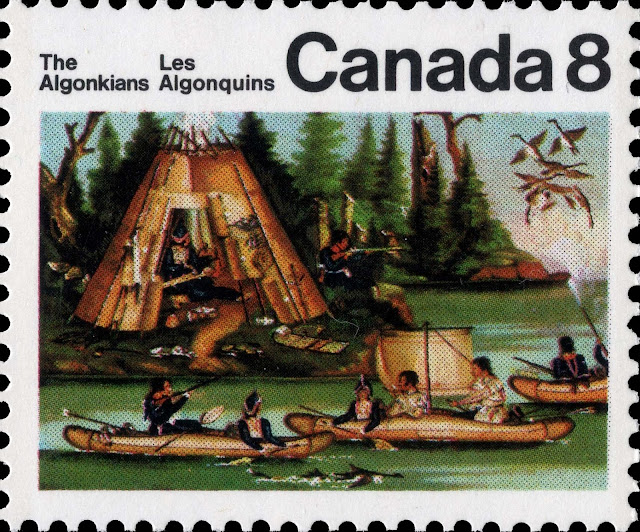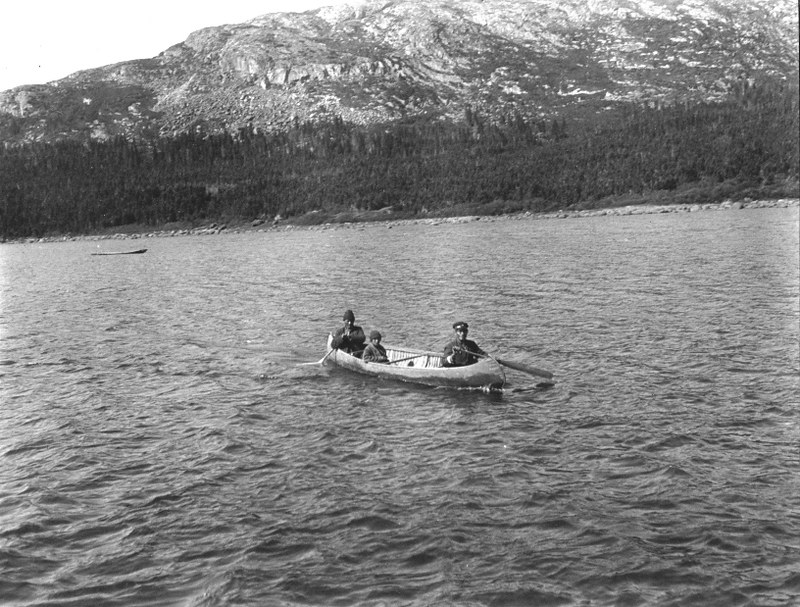Another historical paddle replica I've been excited to work on is from a circa 1850 painting by an unknown artist. One version of this artwork was acquired by the National Gallery in 1957 and was simply titled "Micmac Indians".
 "Micmac Indians"
"Micmac Indians"
Unknown Artist, circa 1850
oil on canvas
45.7 x 61 cm
The image has been reproduced in many books over the years and was even replicated for a Canadian Postage stamp in 1973 . As an additional side note, the work has been praised by Mi'kmaw Historian and Ethnographer,
Ruth Holmes Whitehead, as being a fairly accurate reflection of material culture for the period.
Back in 2015, another version of this scene went up for auction in
London (see
post here) as part of the Peter Winkworth Collection of Canadiana. This oil had a more extensive title but it is believed to painted by the same unknown artist.
Mi’qmak Indian camp on a bay with Mi’qmaks shooting Canada geese
ca. 1850
Artist: Unknown
A closeup of the male hunter on the bottom left shows a paddle resting across the gunnels of the humped canoe. The slender shaft has no discernible grip on the end and the wide paddle blade features a distinct scroll pattern.
The other paddlers also hold slender pole grip paddles with recurved blades and additional curved motifs for decoration. Each of the paddle shafts looks darkened or scorched compared to the relatively light coloured blades which gave me the inspiration to replicate the pattern with pyrography. My paddle was carved out of basswood, not a traditional paddle wood for the region based on surviving samples, but one that would be easy to shape and burn.
Going back to basics, I hacked the blade shape out with an axe to capture the essence of paddle making from this era. The slender shaft was finished with a crooked knife but I had trouble carving out the centre of the wide blade with this tool, so resorted to using a spokeshave for the tricky parts.
I burned the shaft evenly with the garden torch and finished the decorative curves in a darkened burn with a pyrography pen. With some eerie winter light in the backyard, I took a photo of the paddle leaning against the house wall.
Circa 1850 Mi'kmaq paddle replica
There seems to be a bit of mid-season thaw happening in Toronto. Our modest amount of snow has melted, but I'll be waiting until a proper ice-out before giving this unique paddle design a quick dip in some local waters.



















